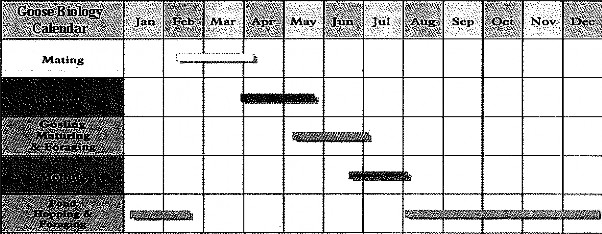
Strategies to Control Over Population
Controlling habitat or access to habitat is a permanent population control strategy but is often difficult to do with established ponds and parks.
Even though storm water retention facilities are necessary to control flooding and water quality from land development; the facilities could be designed or altered to be unattractive to geese. Ponds which are heavily vegetated without much open water (forested swamps, wet meadows, wet thickets) are not habitat types used by geese. Storm water features that become dry within a few days and facilities that do not include mowed or manicured lawns and landscape make a site less attractive to geese. Reducing all other food sources, particularly from public sources (people feeding geese, waste grain and seeds) is also important to reducing attraction to sites. Stringing wires or netting over water surfaces is also effective but often impractical.
Controlling reproductive rates at ponds with established geese is an effective population control strategy.
This is accomplished by oiling the eggs of geese or replacing them with fake or sterile eggs (turkey or chicken eggs). This technique "tricks" the adult bird to continue to sit on an egg which will not hatch due to oiling or sterility. If the eggs are removed from the nest or destroyed this prompts the adult to immediately re-lay. Egg oiling or replacement prompts the adult to sit continuously until they are beyond the point in the season that they can re-lay a second clutch. This short circuit Founder's Effect and ages the population, slowly reduce numbers through natural mortality.
Using behaviour modification techniques is an effectively strategy to discourage geese from areas but tends to be short lived and disruptive to surrounding communities. This technique is labour intensive and uses devices to scare and harass birds to relocate often using pyrotechnical devices (bangers, screamers, cannons) and amplified distress or alarm calls of the target species.